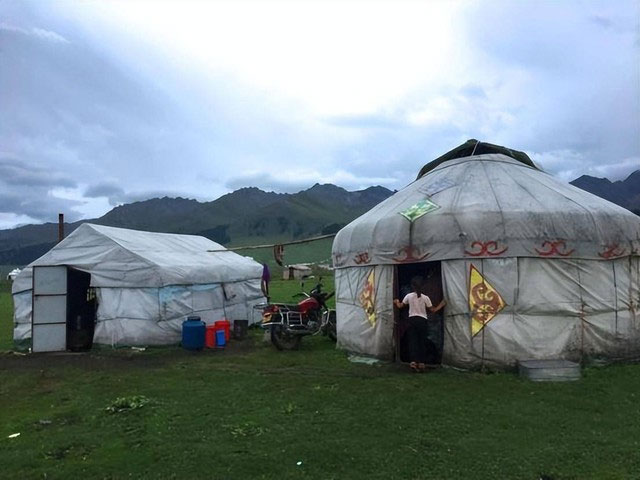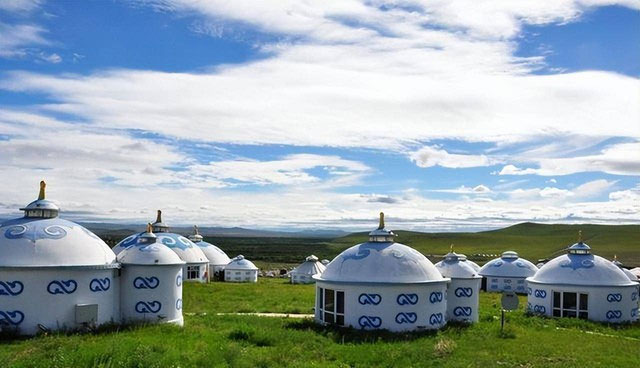How do Mongolian nomads living in tents go to the toilet and bathe?
Mongolian nomadic life is associated with traditional yurt tents. Due to the conditions of frequent travel and living close to nature, their hygiene and bathing methods also have unique characteristics.
The Mongols are one of the few ethnic groups that still live a nomadic life and yurts are their special residence. However, this also leads to a problem, which is that the structure of the yurt is relatively simple and its function does not include a toilet or bathroom.
Once the construction process is completed, the yurt can only be used as a bedroom without any amenities such as a bathroom. In addition, Mongolians also live in a family style, the whole family sleeps in a yurt. So what if a Mongolian wants to take a bath or go to the toilet?

The yurt is a special residence of the Mongols.
Mongolian nomads are famous for their lifestyle of constantly moving with their herds of cattle on the vast steppe. Their lives are closely associated with traditional yurt tents, a place to live, shelter and also address personal hygiene needs.
A large part of the reason why Mongolian nomads live in yurts is because they are highly portable , which can ensure a suitable living environment for their cattle and sheep, while also ensuring there is enough high-quality grassland for livestock to grow and provide economic support for the whole family.
This is why every family living in a yurt chooses to build it near a water source . On the one hand, it can ensure water supply for the human body, on the other hand, it can also meet people's requirements for cleanliness and hygiene.

Every family living in a yurt chooses to build their tent near a water source.
Due to natural conditions and travel habits, Mongolian nomads often defecate in outdoor areas, away from the yurt . They dig small holes, then cover them with soil and move them to another location when necessary. This helps keep the tent clean and protects the surrounding environment. Some nomadic Mongolian families may build separate toilet areas, usually small rooms located behind the yurt. This area is carefully covered to ensure privacy and cleaned regularly to avoid odors.
In fact, Mongolians rarely bathe. The climate in their area is cold and dry, mainly due to geographical location, and frequent bathing will easily lead to colds.
The vast grasslands have formed a unique nomadic culture for the Mongols. They have lived and flourished here for many generations according to the customs of the grasslands. For thousands of years, Mongolian nomads have developed the habit of changing their residences according to the seasons to adapt to the cold and dry climate .

Mongolians can use warm towels to dry their bodies or bathe with kettle water in a yurt.
Mongolians believe that bathing is a ritual of soul purification in addition to body hygiene . They often bathe in spring or lake water, especially on hot summer days . In cold winter, bathing becomes more difficult. Mongolians can use warm towels to dry their bodies or bathe with kettle water in a yurt. Some families may also own a portable wooden bathtub to use when needed.
Because Mongolian nomads always change their residence according to water and grass sources, local people live in yurts. The yurt is easy to disassemble and transport. Accordingly, it has become the best lifestyle in the grasslands and a great innovation for nomads.
Regarding privacy, local people don't care much about it, just make sure no one is nearby when going to the toilet and they can freely "drop love into the soil". Showering can be a bit more difficult because it takes a long time to build the fence next to the tent and heat the water . Before bathing, they will let their family know and be wary of strangers around. However, in general, strangers rarely appear because the yurts built by local people are often very far away and it is difficult to meet strangers.

Mongolians also take yurt hygiene very seriously.
Personal hygiene is important to Mongolians. They regularly wash their hands before eating and after going to the toilet. In winter, when water is scarce, they can use snow to wipe their bodies or wash their hands. Mongolians also take yurt hygiene very seriously. They regularly clean the tent, sweep the floor and dry blankets. The yurt tent is designed with windows and ventilation holes to help air circulate, create ventilation and limit odors.
In real life, Mongols are not as backward as people think. They also have shopping malls and other entertainment venues. And the reality is that not everyone lives in tents and makes a living as nomadic herders, only a few traditional herding families live in tents.
Herders living in yurts were not completely isolated from social developments. Today's Mongols are very different from the original Mongols. Many of them have established permanent livestock areas in many areas and they do not need to change the location of their homes when cattle and sheep migrate.
- Storm shelter resistant to winds up to 180km / h
- The life of the Moken Sea nomads
- The reason Mongolia became the greatest empire in history
- 6 things not to do when going to the toilet
- Learn the facts startled to the toilet makes everyone surprised
- Camping tent solutions cannot be better for groups traveling
- Intelligent urinating: no need to go to the toilet, have self-cleaning system
- The toilet does not need toilet paper
- Special canvas makes Russian rockets stealthy in front of the satellite
- Stunned with the luxury toilet in the Forbidden City
- Smart toilet for the sick
- Never flush water when opening the toilet lid, you're hurting yourself
 'Fine laughs' - Scary and painful torture in ancient times
'Fine laughs' - Scary and painful torture in ancient times The sequence of numbers 142857 of the Egyptian pyramids is known as the strangest number in the world - Why?
The sequence of numbers 142857 of the Egyptian pyramids is known as the strangest number in the world - Why? History of the iron
History of the iron What is alum?
What is alum?